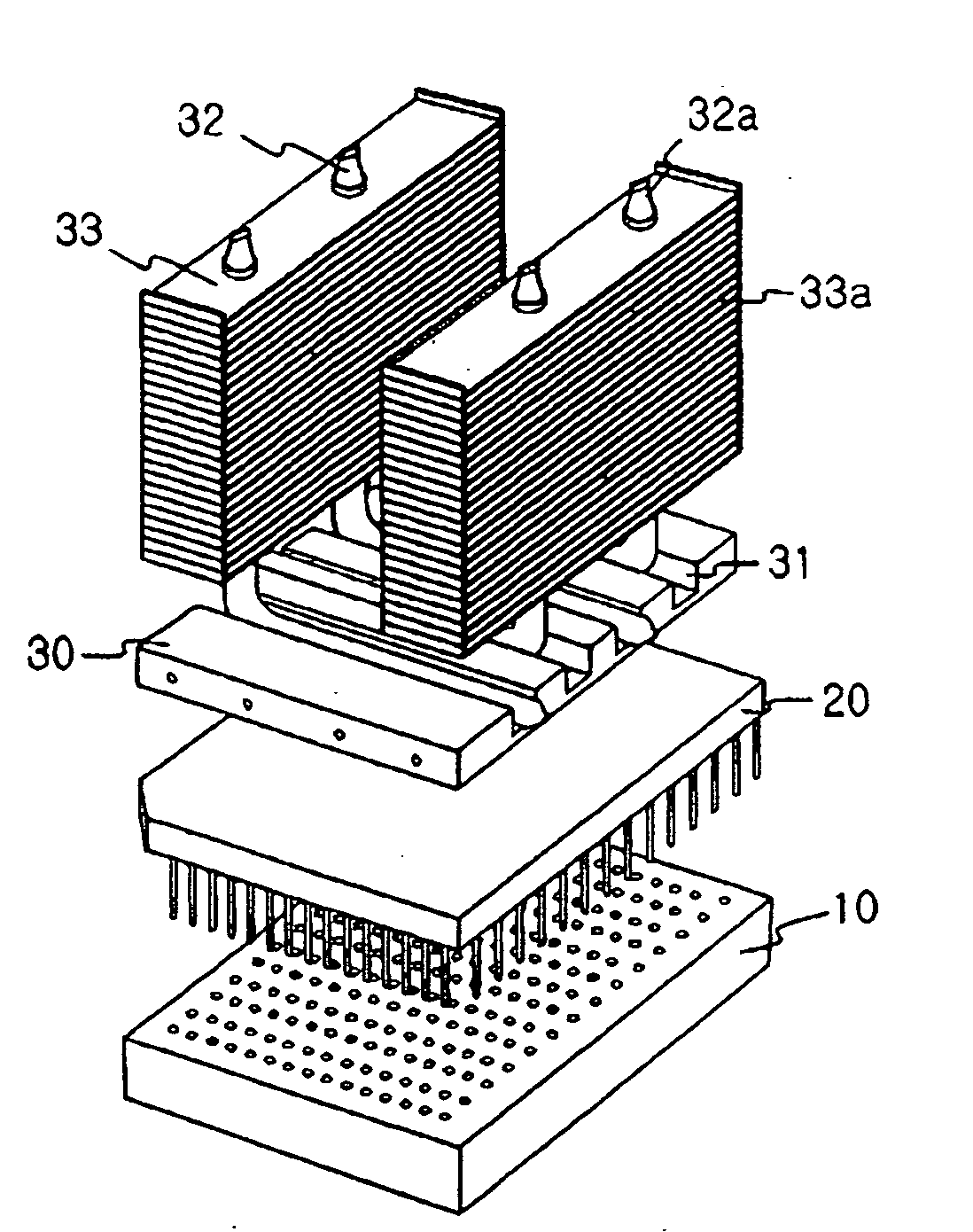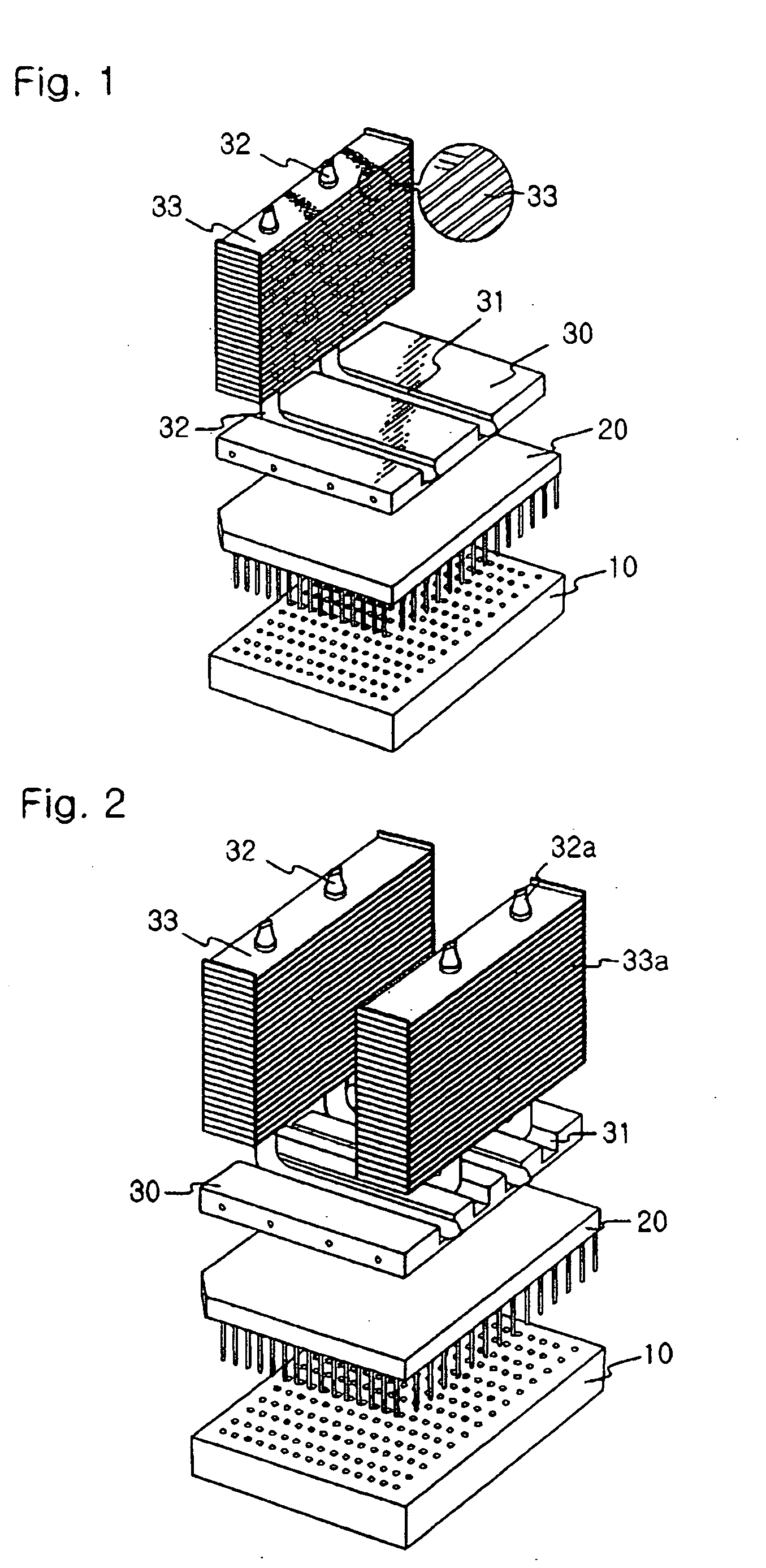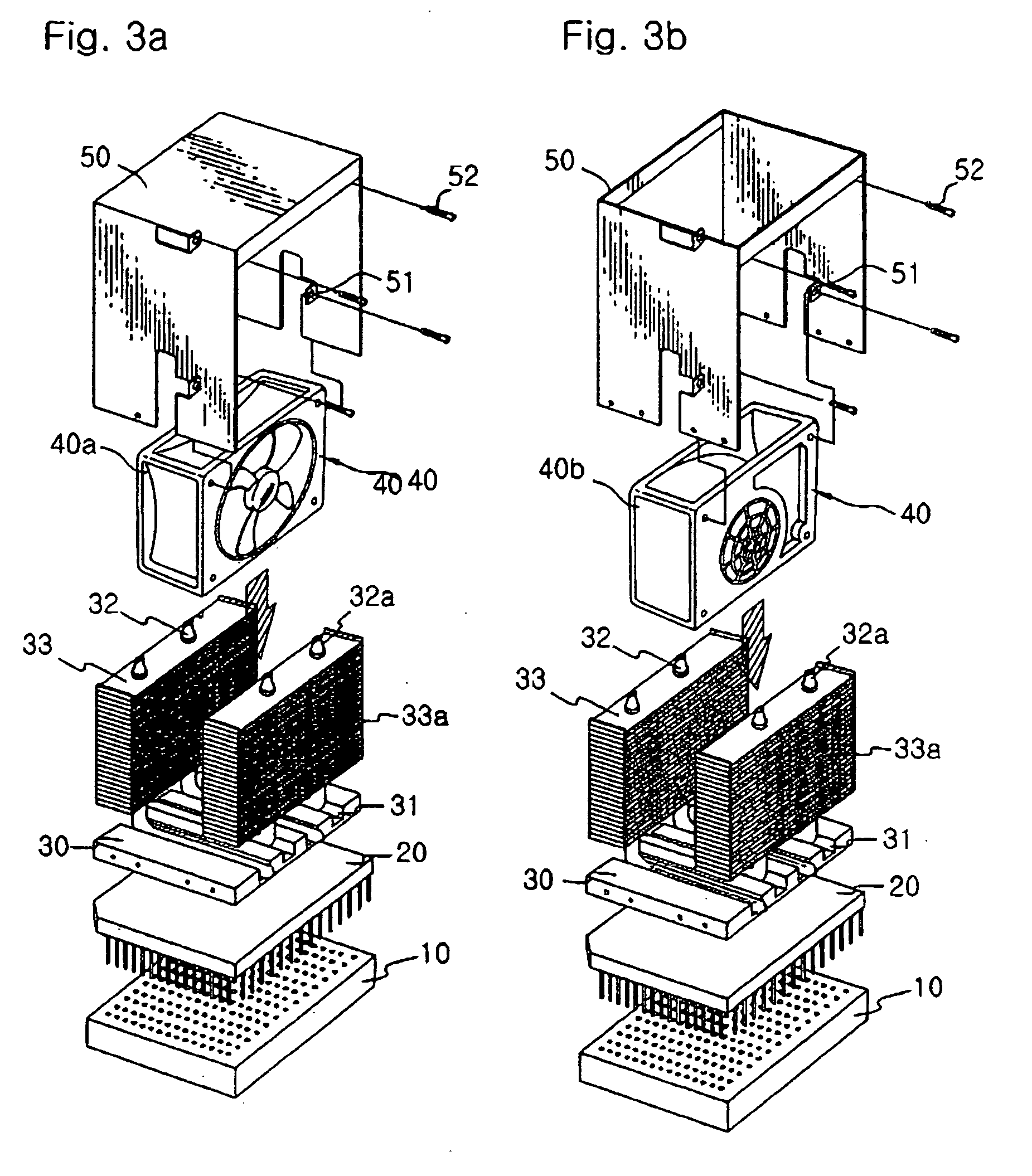Semiconductor chip cooling module with fin-fan-fin configuration
a cooling module and semiconductor chip technology, applied in cooling/ventilation/heating modification, semiconductor device details, semiconductor/solid-state device details, etc., can solve problems such as system errors, rapid overheating phenomenon, and harmful influence on system operation, and achieve the effect of improving the radiating efficiency of heat radiating fins
- Summary
- Abstract
- Description
- Claims
- Application Information
AI Technical Summary
Benefits of technology
Problems solved by technology
Method used
Image
Examples
first embodiment
[0034] the air ventilating means will be described.
[0035] Referring to FIGS. 3a and 4a, FIG. 3a is an exemplary perspective view of an example employing an axial flow fan as an air ventilating means in accordance with a first embodiment of the present invention, and FIG. 4a is a longitudinal cross-sectional view of the first embodiment shown in FIG. 3a.
[0036] As shown in FIG. 3a, the axial flow fan 40a is installed between the both of heat radiating fins 33 and 33a, and when the axial flow fan 40a is rotated, the air is entered to the one side of the heat radiating fins 33 and discharged to the other side of the heat radiating fins 33a; at this time, the wind passes through between the pair of heat radiating fins 33 and 33a by the axial flow fan 40a to cool the heat of the heat radiating fins 33 and 33a.
second embodiment
[0037] the air ventilating means 40 will be described.
[0038] Referring to FIGS. 3b and 4b, FIG. 3b is an exemplary perspective view of an example employing a bi-directional air intake centrifugal fan as an air ventilating means in accordance with a second embodiment of the present invention; and FIG. 4b is a longitudinal cross-sectional view of the second embodiment shown in FIG. 3b.
[0039] As shown in FIG. 3b, the bi-directional air intake centrifugal fan 40b is installed at a space between the both heat radiating fins 33 and 33a, and the bi-directional air intake centrifugal fan 40b introduce the air to between the both heat radiating fins 33 and 33a to discharge the air upward, thereby cooling the heat radiating fins 33 and 33a by means of the air entered between the heat radiating fins 33 and 33a.
[0040] As described above, a cooling operation of the heat radiating fins 33 and 33a by the air ventilating means 40 located between the plural rows of heat pipes, since a radiating ef...
PUM
 Login to View More
Login to View More Abstract
Description
Claims
Application Information
 Login to View More
Login to View More - R&D
- Intellectual Property
- Life Sciences
- Materials
- Tech Scout
- Unparalleled Data Quality
- Higher Quality Content
- 60% Fewer Hallucinations
Browse by: Latest US Patents, China's latest patents, Technical Efficacy Thesaurus, Application Domain, Technology Topic, Popular Technical Reports.
© 2025 PatSnap. All rights reserved.Legal|Privacy policy|Modern Slavery Act Transparency Statement|Sitemap|About US| Contact US: help@patsnap.com



